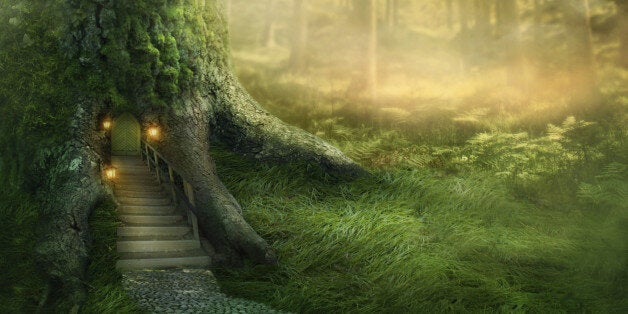
Why do we still tell old traditional tales? Why do fairy tales and myths endure, and what use are they to our children?
I write contemporary children's fiction inspired by the traditional tales I loved as a child - Scottish folklore, German fairy tales, Greek myths, dragon legends - and by the traditional tales from all over the world I have searched out since. But do today's children gain anything from knowing these old stories, and should parents encourage familiarity with traditional tales?
These old stories endure because we love them, but also because they say something important to us:
Little Red Riding Hood talking to the wolf
A Russian girl escaping Baba Yaga because she'd been kind to the witch's pets
Warriors using both wit and strength to defeat dragons
Monsters devouring those who stray near the water's edge or deep into the forest
These tales carry warnings, messages about how human beings can live together and encouragement to overcome obstacles. That's why wise old women told them. But children listened because these tales are exciting. They're dramatic and vivid, they give us everything we want and need from stories.
That's why today's writers are inspired by them. We loved them as children. Now we build our new stories out of the old tales, because the old stories still sparkle with magic.
Traditional tales are the building blocks of much our contemporary culture, so a working knowledge of old stories can enhance your appreciation of books, films, dance...
A young reader can enjoy my Spellchasers Trilogy without any knowledge of sphinxes, dryads, kelpies or wyrms. But a reader who's familiar with a few of those old tales will feel a personal connection to the story, like they have secret knowledge of the world they're reading about.
This recognition of old magic hidden inside new novels enhances a reader's enjoyment of many modern children's books. And enjoying books - reading for pleasure - is a powerful tool for helping a child achieve.
Knowledge of the old tales also encourages empathy for other people and cultures, and curiosity about the world. The old tales explaining why bears have no tails and why crows have croaky voices can encourage children to explore the real science of the world around them.
So old stories can have current benefits for your children. What can parents do to create a love of traditional tales?
You can read traditional tales together. There are many family-friendly illustrated collections available, often themed by culture or subject (I've written a few myself...)
You can discover your own local folklore. Your local library or museum should have old sources, which might not be suitable for kids to read, but you can find snippets of local lore and retell them.
If your child loves cats or horses (or dragons!) you can search out relevant stories from all over the world.
You can research stories from the cultures in your family background, or any other cultures you find fascinating.
But don't just read these stories, make them your own. Act them out. Draw pictures of your favourite moments. Make up wanted posters for the baddies. Find recipes for food the characters eat. Share the stories with other people.
And be inspired to create your own new stories. What do those fairy tale characters do next? What would happen if that mythical monster appeared in your street tomorrow morning? Use the magic to inspire your own new adventures.
That's what I do. I create new stories (novels!) by throwing a mix of magic and monsters from old stories into the contemporary Scottish landscape, and seeing what happens next.
Of course, I'm not the first to create new stories from old tales. That's how CS Lewis built Narnia. He wasn't the first either. That's how William Shakespeare conjured up his Midsummer's Night Dream. Even he wasn't the first. Because all those myths, legends and fairy tales were made up by storytellers long ago, from bits and pieces of the stories they loved when they were young...
Nowadays we're privileged to have access to global folklore and legends: Viking sagas, African tricksters, Native American creation myths and Scottish shapeshifters. No one can know it all, but familiarity with their own corner of the world's traditional tales gives any child a strong basis for both cultural empathy and their own growing imagination.
Also, the old stories are still the best stories!
Ten children's books inspired by traditional tales
- Power of Three, by Diana Wynne Jones
- The Graveyard Book, by Neil Gaiman
- Heroes of the Valley, Jonathan Stroud
- Knife, RJ Anderson
- Winterbringers, by Gill Arbuthnott
- The Thirteen Treasures, Michelle Harrison
- The World's Bellybutton, Tanya Landman
- The Robe of Skulls, Vivian French
- Young Knights of the Round Table, Julia Golding
- The Three Little Wolves and The Big Bad Pig, by Eugene Trivizas
Lari Don's new book Spellchasers: The Beginner's Guide to Curses, inspired by Scottish, English, Egyptian and Greek tales, is out now, published by Floris Books.